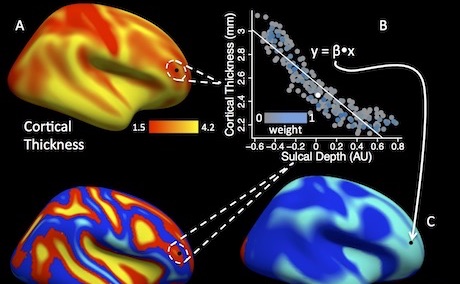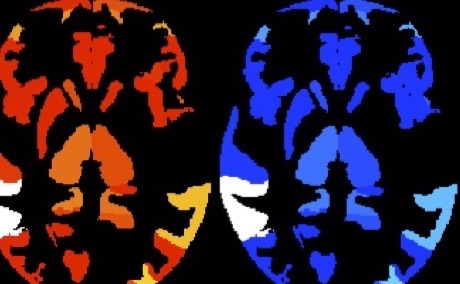
Intermodal Analysis
Cortical Coupling is a measure we created to describe localized relationships between characteristics of the cortex. The work was published in Neuroimage in 2016 with code to estimate coupling from Freesurfer data. My colleagues have extended the work to improve segmentation of MS lesions. Intermodal coupling (ImCo) is also being used by colleagues improve the estimation of cerebral blood flow, make coupling estimates symmetric between modalities, and include more than two modalities.
Coupling was a modification of another tool we developed to investigate the relationship between cortical characteristics as the brain matures through adolescents. In this work, we developed the "Spin Test" to assess the spatial coherence between two measures on the cortical surface. In a more recent Neuroimage paper we studied the theoretical properties of the test in order to formally define what conclusions can be made using the Spin Test. Future work will study the dataset-to-dataset variability of the Spin Test and include the ability to control for covariates.

Hypothesis Testing Procedures for High-dimensional and Neuroimaging Data
Several recent studies have shown that multiple testing procedures for neuroimaging that rely on Gaussian random field theory have inflated FWERs. As a solution we developed two procedures that control the FWER when performing tests at each voxel or a set of brain regions. The first uses a dimension reducing reduction to improve power by performing inference on a lower-dimensional projection of the data. In a Biostatistics paper we proposed a fast parametric bootstrap joint (PBJ) procedure for region- and voxel-wise analyses that controls the FWER at the nominal level. Current work combines the PBJ procedure with and estimating equations to perform cluster-extent hypothesis testing that is robust to model misspecification.